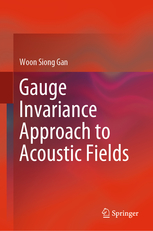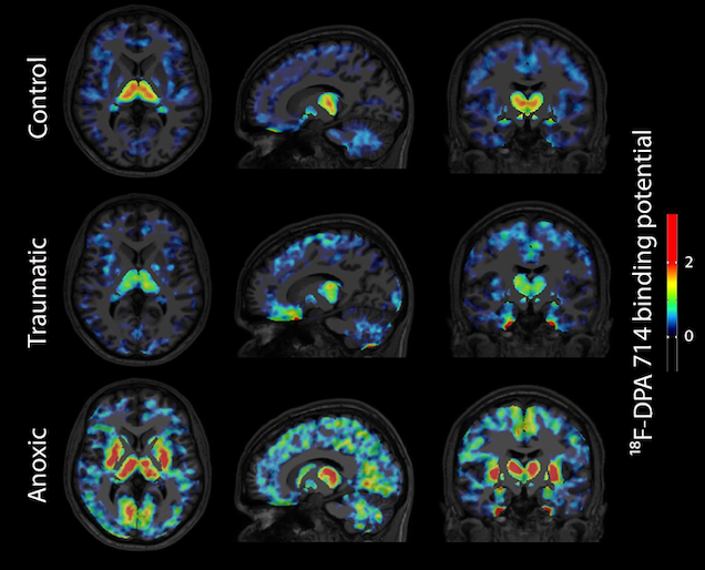Gauge Invariance Approach to Acoustic Fields
- Recherche,
- Santé-Sciences-Technologie,
- Santé-social,

le 31 octobre 2019
Dr. Dos Santos signed the book's foreword on "Gauge Invariance Approach to Acoustic Fields"
Gauge Invariance Approach to Acoustic Fields
Foreword
I first encountered Woon Siong Gan during the 22nd International Conference of Sound and Vibration (ICSV22) in Florence in July 2015. After the first meeting, I soon realized that his expressed interests in nonlinear acoustics, fundamental physics and Lie groups were the surface tell tales of wide-ranging curiosity and a talent for careful analysis. He was, and is, a researcher interested in building, but he was, and is, equally interested in ideas. We both were elected as directors of the International Institute of Acoustics and Vibrations (IIAV) for the period 2018– 2022, the first time for me and the second time for Woon Siong, who was first elected in 2002.
Not long thereafter, Woon Siong asked if I would be willing to co-chair a special session in “Nonlinear Acoustics and Vibrations” during ICSV23. My first reaction was to accept with pleasure this proposal since I consider nonlinear science as a new workhouse for improving technologies and knowledge in various domains of applied acoustics such as nondestructive testing (NDT), medical imaging and analysis of complex data in the wide sense. Our plan was to invite eminent sci- entists who are making major contributions in different areas of nonlinear acoustics, to deliver formal talks on their visions of the great challenges and possible pay-offs from Nonlinear Sciences, Technologies, Engineering and Mathematics (Nonlinear STEM) for the twenty-first century. Since 2016, we co-chair the “Nonlinear Acoustics and Vibrations” session in annual ICSV meetings.
Of course, my personal scientific education conducted in the field of theoretical physics to the Department of Nonlinear Physics of the University of Dijon, France, motivated me to accept the invitation to write the foreword for Woon Siong’s book. In this topic, I love the idea to associate symmetries and invariance to a new way to extract new suitable parameters able to provide new acoustical information. Since there are several situations in acoustics which are consequences of the symmetry properties of acoustic fields, such as time reversal symmetries and acoustic meta- materials, I have personally made some contributions with my research group where symmetries enable simplifications of the complexity. Since the approach of this book comes from the fundamental mathematics of gauge theory such as change of variables in coordinate systems, symmetry analysis using Lie groups is used, I consider that Woon Siong Gan is the unique researcher enable to exhibit applica- tions of gauge invariance in acoustic metamaterials, nonlinear time reversal acoustics, acoustic diodes, electron–phonon interaction, spintronics, etc. I deeply consider that Woon Siong Gan is uniquely qualified to write this book which associates acoustics and gauge invariance coming from theoretical physics. Considering the huge and wideband qualifications of Woon Siong Gan related to theoretical physics, he is uniquely qualified to convince acousticians about the real added value of his ideas presented in the book, and the benefits readers will get from reading it.
In the past few years, nonlinear sciences has shown to provide several appli- cations, not only in the acoustic fields, but also in electromagnetic, biomedical and neuromorphic sciences. Nonlinear acoustics has gone from an arcane subject known to a few of my students in engineering sciences, to a subject engaging the curiosity of many different research communities including researchers in material charac- terization, signal and image processing, NDT integrity engineering, biomedical engineering and computer sciences. A major reason for this interest is that nonlinear acoustics and fundamental physics really work. Nonlinear science and group theory offer a robust framework that can exploit massively parallel architectures and applied to practical applications, and they provide a new route towards an under- standing of small signals that can be extracted from environmental acoustic noise. Woon Siong Gan book provides a turnpike into this territory.
I consider this book as a keystone for going ahead for two major reasons:
- First, all the main themes using acoustics have been revisited with the gauge invariance approach.
- Second, important contribution of this book was to correct choice of chapter ordering. Important number of examples demonstrated also the real emergence of applications for nonlinear acoustics, metamaterials, etc.
In recognition of his numerous contributions to the board fields of nonlinear acoustics, I hoped that this book would provide the most appropriate reference for our community of acoustics and vibrations. I believe that the throughout ideas and positions to be advocated by these chapters will help to identify important but tractable research directions in nonlinear acoustics and to provide leadership and inspiration to future generations of researchers for solving many fundamental problems from such multidisciplinary areas as NDT, medical imaging and funda- mental of acoustics.
The majority of the target audience of this book would be scientists and engi- neers. However, I also recognized that much of the visions to be projected by this book would most likely call for generations of young blood in the coming decades. Consequently, I would suggest to students in theoretical acoustics to investigate deeply all the ideas presented in this book. I hope all of the students will take advantage of this privileged opportunity and that most of them will apply, in future, the concepts discussed in this book and contribute to enhance them, remembering, at the same time, that fundamental mathematics is necessary for understanding our complex world. This book, together with previous ones written by Woon Siong Gan, will provide a solid foundation of modern acoustics using gauge invariance and will stimulate intense worldwide research activities.
One cannot be around Woon Siong Gan for long without being infected by his enthusiasm, knowledge and energy. That enthusiasm comes across this book. It is also an embodiment of his passion for clear explanations and carefully worked examples. His book does an exceptional job of making the methods easily appli- cable to acoustic fields available to a wide audience. Woon Siong is deeply inter- ested in the intellectual problem of the conceptualization of acoustic science, but he is interested even more in seeing these systems used in the domain of NDT, metamaterials, etc. This book, I think, will be instrumental in realizing that ambi- tion. I wish to take this opportunity to thank Woon Siong for giving me the opportunity to write these words related to this inspiring book, containing visionary ideas.
I believe that the thoughtful ideas and positions to be advocated by these chapters will help to identify important but tractable research directions in nonlinear acoustics and to provide leadership and inspiration to future generation of acous- ticians for solving many fundamental problems from such multidisciplinary areas such as metamaterials, eco-acoustics, noise in complex systems, using the powerful tools of neural networks, artificial intelligence, nonlinear dynamics, Lie group theory and advanced signal and image processing. As a tribute to Woon Siong Gan’s legacy to acoustics, I remark that he has always been a strong advocate of mathematical rigour as an essential standard and element in the discipline of nonlinear acoustics, even though he has also emphasized the crucial importance of physical interpretations and experimental confirmations.
July 2019, Blois, France
Dr. Serge Dos Santos, Hab. Dir. Rech., Director of the IIAV Full Member of Academia NDT International



